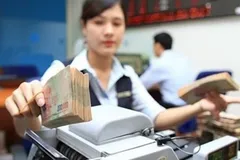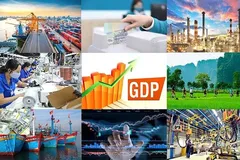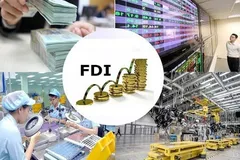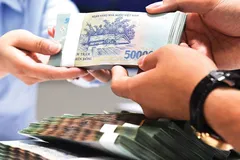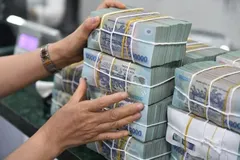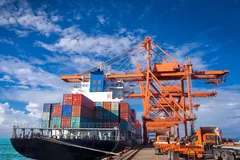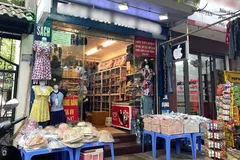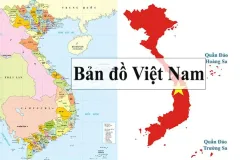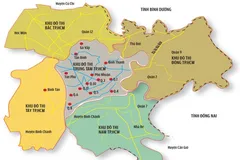
Saigon Investment sat down with Assoc. Prof. Dr. Nguyễn Hữu Huân, Senior Lecturer at the University of Economics Ho Chi Minh City (UEH), to discuss Vietnam’s current position at the negotiating table with Washington, and what strategies the country must adopt to secure a competitive edge.
JOURNALIST: - The U.S. recently agreed to reduce tariffs on Chinese goods from 145% to 30%, while China has cut tariffs on U.S. imports from 125% to 10%. What’s your take on this development?
Dr. NGUYỄN HỮU HUÂN: - Former President Donald Trump initially weaponized tariffs to bring countries to the negotiating table under pressure. The idea was simple: impose sky-high tariffs, then bargain down in exchange for concessions.
China, however, was well-prepared. They stress-tested their economy during the COVID-19 pandemic, effectively simulating a scenario in which exports were completely halted. That gave them confidence going into negotiations. By showing they could survive a trade shutdown, they earned leverage. Now, with this mutual tariff reduction, China is signaling its ability to hold firm while still reaching a deal.
For Vietnam and other countries, this new U.S.-China deal sets a high bar. If we can't negotiate similar or better terms, we risk losing our competitive advantage. Worse, we could face harsher conditions if we fail to meet U.S. demands—especially in addressing their concerns over transshipped goods from China.
JOURNALIST: - So what are your expectations for Vietnam’s own negotiations with the U.S.? What strategies should we be using?
Dr. HUÂN: - The crux of the issue is that the U.S. doesn’t want Vietnam to act as a gateway for Chinese goods to enter their market under different labels. If Vietnam can prove it's not just a transit hub, but rather adds real value to exports, we can ease some of the tariff pressure. But that's easier said than done.
Let’s look at the numbers. Vietnam’s trade surplus with the U.S. is about $120 billion annually. However, Vietnamese firms only account for around $10–20 billion of that. The remaining $100 billion comes from foreign companies importing components—mostly from China, Japan, and South Korea—assembling them in Vietnam, and shipping to the U.S. In this sense, we’re more of a staging ground than a source of origin.
This makes negotiations difficult. If China is now subject to 10–20% tariffs on many items, but Vietnam ends up with a 46% rate, we’re in trouble. That would not only hurt exports but also push foreign direct investment (FDI) away from Vietnam toward countries with better trade terms.
A key strategy is to increase the localization rate—the percentage of Vietnamese-made inputs in final exports. Right now, it’s only about 10%. If we can raise that to 40–50% over time, we’ll have both a stronger bargaining position and a bigger slice of the economic pie. But this is a long-term play and must be framed that way in negotiations. The U.S. will need to see a roadmap and firm commitments, not vague promises.
JOURNALIST: - Beyond localization, are there any tactical advantages Vietnam can bring to the negotiating table?
Dr. HUÂN: - Yes, though they may be limited, they are still worth using.
Vietnam’s role in Southeast Asia and its integration into global supply chains—particularly in textiles, footwear, and electronics—gives us some leverage. If U.S. tariffs are too high, it disrupts not just Vietnam but also the American companies relying on our supply. That could be an important bargaining chip.
Also, the U.S. wants to diversify away from China, and Vietnam is a key partner in that strategy. We need to emphasize this alignment with U.S. interests—present ourselves as a reliable manufacturing base, not a workaround for Chinese goods.
JOURNALIST: - Looking ahead, what long-term policies should Vietnam pursue to strengthen its trade position?
Dr. HUÂN: - Our current role in the global value chain is still heavily concentrated at the lower end—mostly assembly and processing. These are low-margin, high-dependency roles. To climb up the value ladder, Vietnam must invest aggressively in supporting industries—the ones that produce raw materials and components for high-value exports.
Right now, our domestic supply chain is too dependent on imported inputs. That makes us vulnerable. Just look at how a single disruption in China or South Korea can grind operations here to a halt. We need to flip that. By developing vertical supply chains within Vietnam, we can reduce costs, improve resilience, and—most importantly—raise our actual contribution to export value.
This means supporting local suppliers, offering incentives for technology transfer, and pushing for R&D in sectors like electronics, pharmaceuticals, and advanced materials. It’s not just about exporting more—it's about exporting better.
Also, we need to stop spreading our resources too thin. The government should focus on deepening the strength of a few strategic sectors rather than expanding into too many areas with limited impact. This "vertical" development approach will build the kind of industrial base needed to support meaningful tariff negotiations in the future.
JOURNALIST: - Thank you for your insights.
Dr. HUÂN: - My pleasure.


